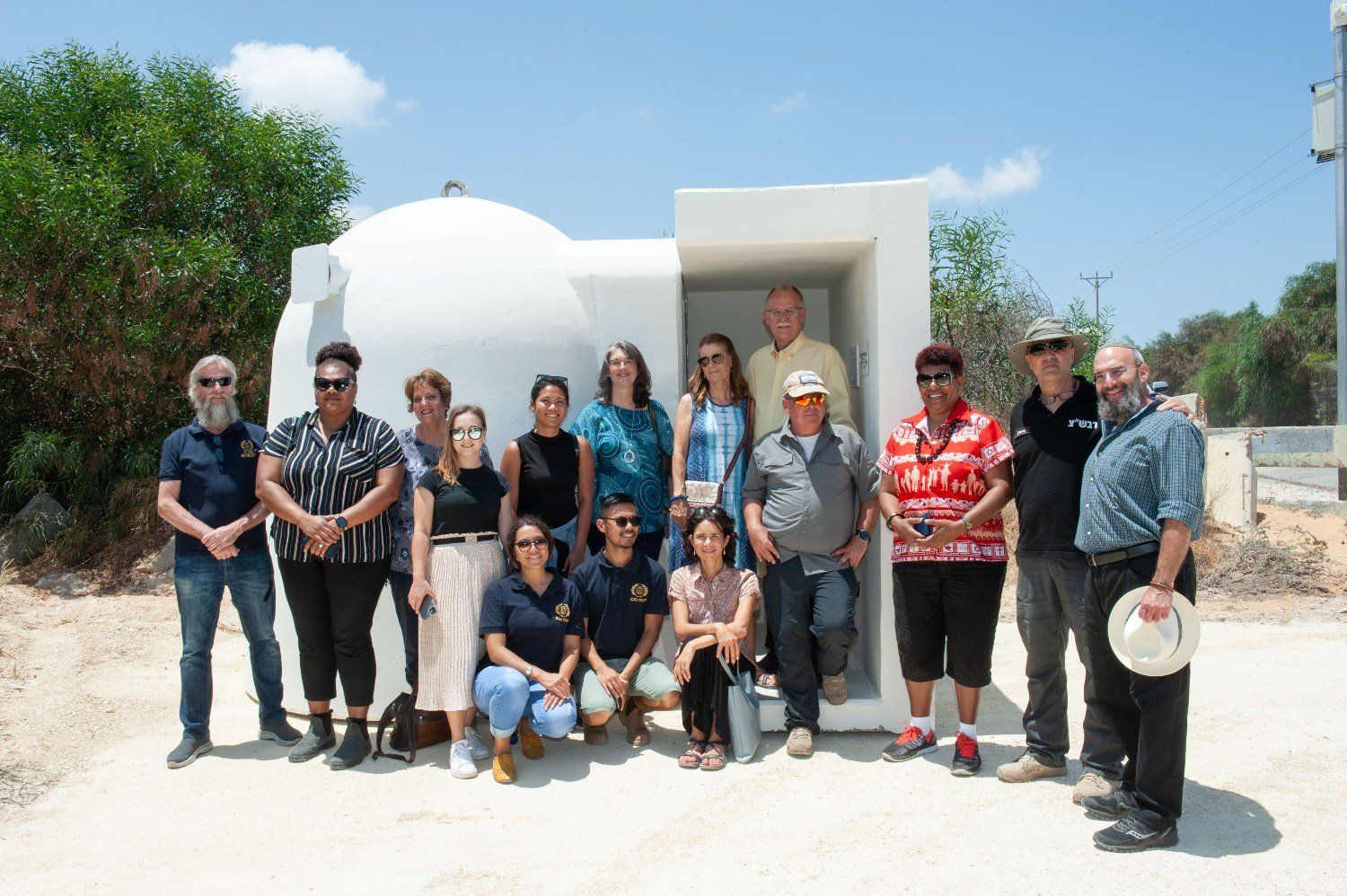Common Questions & Answers
-
Why does Israel need bomb shelters?
The modern state of Israel has been under constant threat of destruction since the day it was established.
Terrorist groups in Lebanon and Gaza are determined to destroy the Jewish State. They have each sent thousands of missiles into Israeli civilian areas, and constantly threaten to send more.
With neighbors like these on both fronts, war is always on the horizon. Even in times of relative “quiet,” rockets can come in at any time, at a moment’s notice.
Israelis living near the border only have seconds to scramble to shelter when rocket sirens go off. Unfortunately, the Iron Dome is not 100% effective. At this time, it is unable to intercept rockets that are headed towards communities that are very close to the border. In situations like these, (which have been particularly common near the Gaza border over the past few years), the presence of bomb shelters is the difference between life and death.
Since the Gaza Conflict (Operation Protective Edge) in the summer of 2014, schools, institutions and communities have been desperately trying to provide protection solutions for their constituents, in preparation and anticipation for the next war. Operation Lifeshield has met with mayors, social workers, security chiefs and educators in targeted areas in order to develop strategic relationship and to maximize the help we can provide, and also be confident that the shelters we deploy will be well-maintained and serve the most-in-need.
Operation Lifeshield’s goal is simple: to save lives in Israel from enemy rocket attacks.
-
How many rockets and mortar shells has Gaza fired into Israel?
Terrorists in Gaza have fired a total of over 25,700 rockets and mortar shells at Israeli civilian areas since 2001. More than 10,000 of those were fired at Israel since 2014.
-
How long does it take to build a shelter, and who manufactures it?
We are proud to have a very fast turnaround time. The time between the order and the day of delivery could be between 2 weeks and 2 months, depending on the manufacturer’s stock, national holidays, and the weather (it takes longer for newly cast shelters to dry when it rains).
The local Israeli manufacturers we usually work with are Wolfman Industries, IMI Systems, and Ortec. All of our shelters are above-ground, fully-accessible structures, and meet the strictest standards of the IDF Home Front Command.
-
Where does OL get its funding?
Most of our funding comes from Christian and Jewish community groups, organizations, and individuals worldwide.
-
Does the Israeli government really not provide any shelters for these at-risk areas?
The government only provides fortification for structures within 7 kilometers of the Gaza border, provided that they have already been there for several years, before around 2012. New buildings and anything more than 7 kilometers from Gaza do not receive a safe room from the government.
However, the government obligates all schools and public institutions in Southern and Northern Israel to have shelters, and threatens to shut down those who don’t comply.
-
How do you decide where the shelters should go?
We regularly meet with local security authorities who keep us updated on what the most urgent needs are.
-
How large are your shelters, and how many people do they serve?
OL shelters are available in various sizes. Most can hold between 12 – 50 people. Our most requested shelter can hold over 20 people. The largest “shelter” project we’ve done involved fortifying an entire Hydrotherapy Center in Ashkelon, which can protect hundreds of people.
Even when the sirens aren't sounding, a shelter's presence alone brings confidence, security, and peace of mind to thousands of residents and tourists on a day to day basis. Our shelters are continuously protecting and saving lives, reducing anxiety, and helping people live as normally as possible in an abnormal situation.
-
How many shelters has OL placed throughout Israel so far?
Operation Lifeshield has deployed approximately 500 accessible, transportable Lifeshield shelters since 2006, so that residents may participate in outdoor activities, visit medical and treatment clinics, attend religious services and go about their daily routine while enduring life threatening conditions. We will continue to be proactive by responding to requests from areas in greatest danger. Operation Lifeshield shelters are protecting men, women and children every day!
-
How much does a shelter cost?
It depends, many factors need to be taken into consideration. Different locations require different specifications. It’s best to email us directly for an accurate quote.
-
Are OL shelters placed on private or public land?
Our shelters are always placed on public land. Our only exception was a shelter donated to a sheep farm that was built on private land, which was created to serve the public and tourists.
-
What types of shelters are most needed right now?
The greatest need in Southern Israel (for communities along the Gaza border) and Northern Israel (in harm's way of Hezbollah rockets) are concrete cuboid-shaped shelters. Each cuboid shelter can accommodate over 20 adults. Click here for photo.
The Bell Shelter is our most speedily-deployed shelter. They can be at a kindergarten or school bus stop within a few days from order. They come in two models: with a 375 lb. steel blast door or with a 5 metric ton concrete passageway (doorless). Click here for photo of door model, and click here for photo of passageway model.
We're also constructing on-site protective rooms. These are projects for schools, therapy centers, sports halls, and other places where the only option for protecting lives is building within an existing space. The cost varies based on the size. Click here for photo.
- Standard Donation
- Canadian Donation
- Stock Transfer Donation
To subscribe to our Weekly Briefing mailing list, click here
Donate with Credit Card
- Secure Stripe Checkout
- Donate with PayPal






